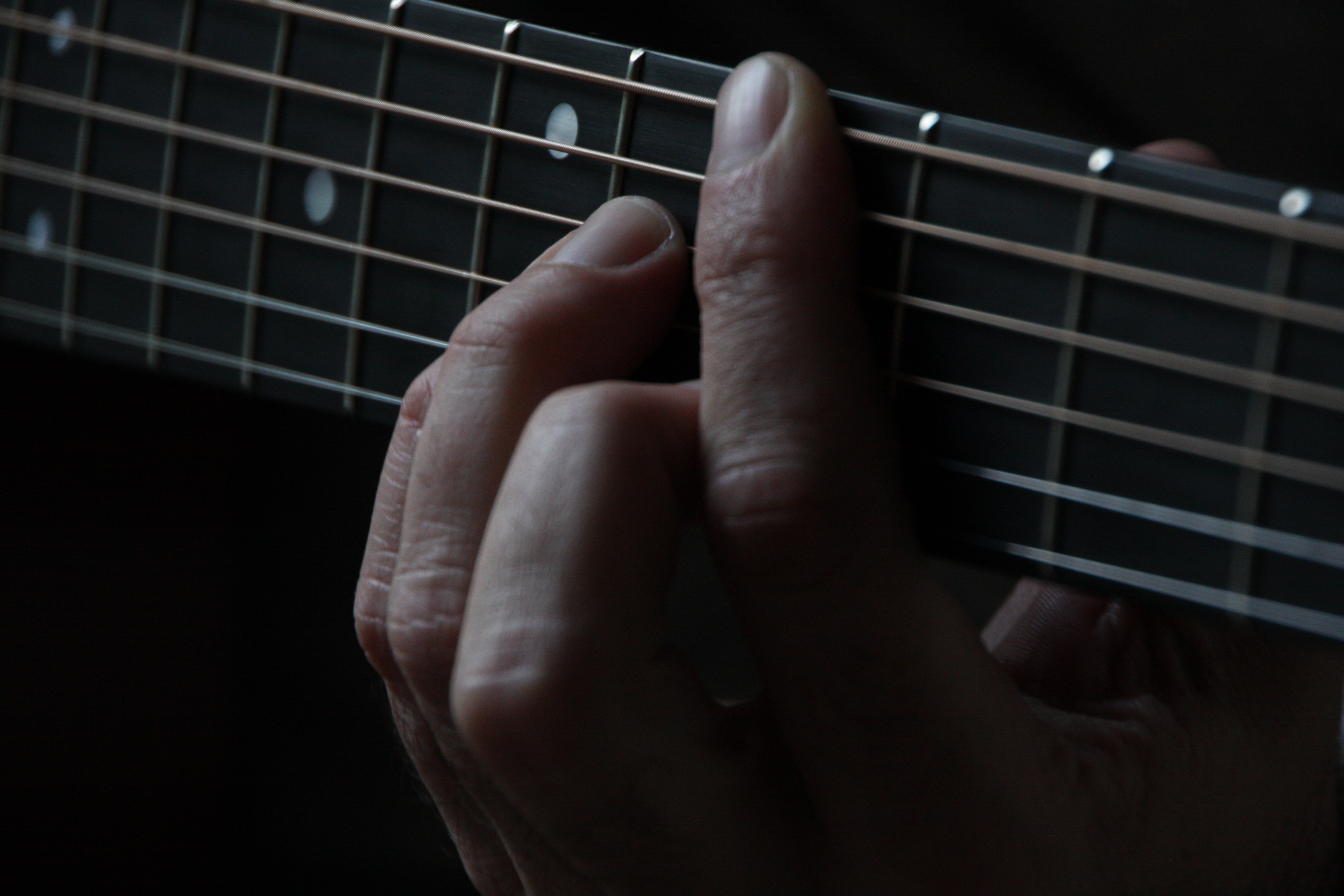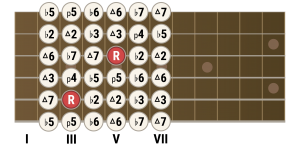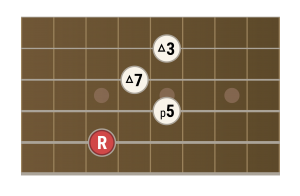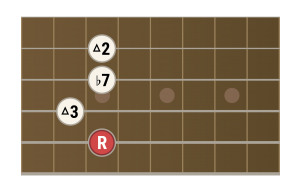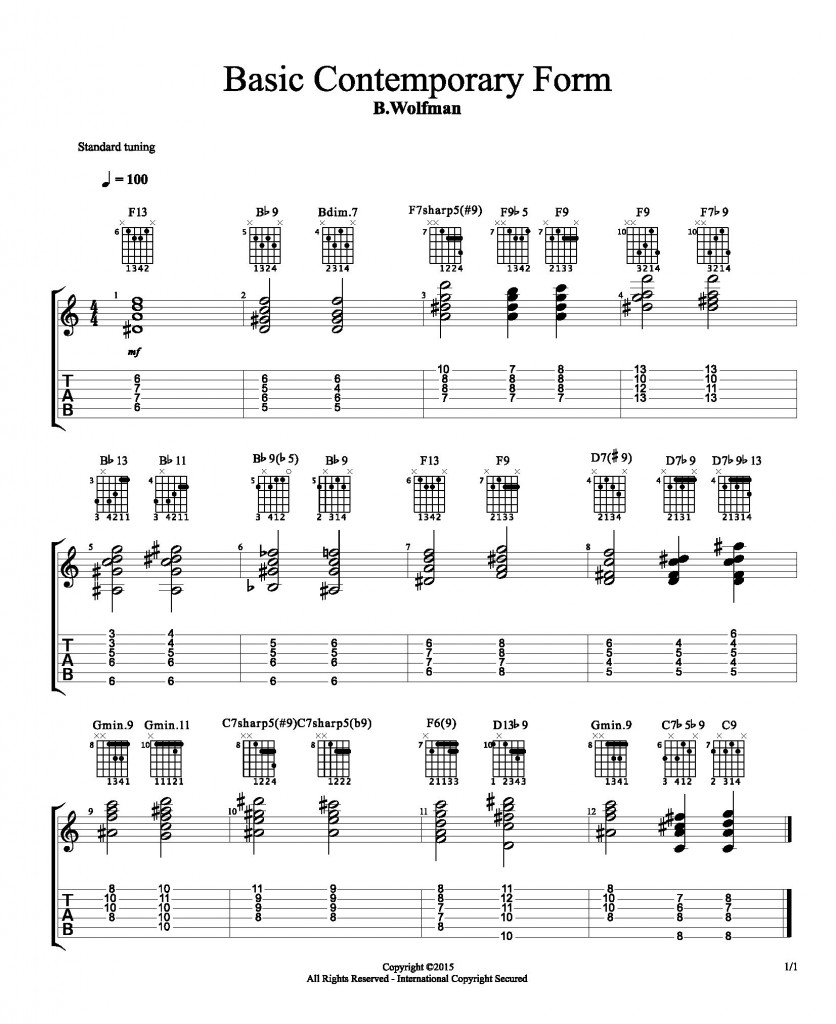As a kid, I remember those paint-by-number paintings in my dentist’s office or at some relative’s house. They were usually pretty ugly, but playing-by-numbers will add some really gorgeous colors to your chordal accompaniment. You create colorful chordal arrangements using chord substitutions, whereby we add extensions to chords with 9ths, 11ths, and 13ths in place of the simple “mother” chord. The tool we use for this process is the Interval Matrix.
Most guitarists learn their chord vocabulary in pretty much the same way by referencing chord diagram books, sheet music, or your buddy Bill. First we learn simple “cowboy” chords, then some Barre chords, and then moveable forms, all of which are communicated or seen by shapes. This is fine for simple folk, rock, pop, or blues, but to beef up your comping and add more color, it makes sense to advance to the next level…to move beyond just seeing shapes!
More advanced guitarists see the fretboard numerically, in the form of intervals.
DIAGRAM #1 – Interval Matrix
Note: Check out the ~ Root on 3rd fret of 5th string, Major 3rdth on 2nd fret of 4th string, and minor 7th on 3rd fret of 4th string, and so on. You can build any chord in the key of C using this matrix of numbers. Apply this approach for any of the 12 keys in music simply by sliding the matrix up or down.
DIAGRAMS #2 – Chord Shapes with Intervals
C Major 7th and C9 chord forms INTERVALLICALLY – not just as shapes
DRILL:
1.) Pick a Chord – Map it out on paper in a fretboard diagram as in DIAGRAM #1. REMEMBER, interval locations will move depending on the key/root of the chord.
2.) Locate the root and then write down all of the intervals on each string in relation to the root.
The interval matrix remains the same, but just changes position depending on what key you choose. It just moves up or down the fretboard! You will quickly get accustomed to this approach.
DRILL:
1.) Play EXAMPLE #1 – Basic Contemporary 12 Bar in F
2.) Play EXAMPLE #2 – Basic Contemporary Form in F
3.) Write down some of the chords on paper in a fretboard diagram. Analyze the chords intervalically. EX: Where is the Root, 3rd, 5th, 9th, etc.
4.) EXPERIMENT! Play an A13, then try altering the 13th. Raise or lower it and listen!
5.) Apply step #3 above to different chords.
EXAMPLE #1 – 12 Bar/Basic Contemporary in F
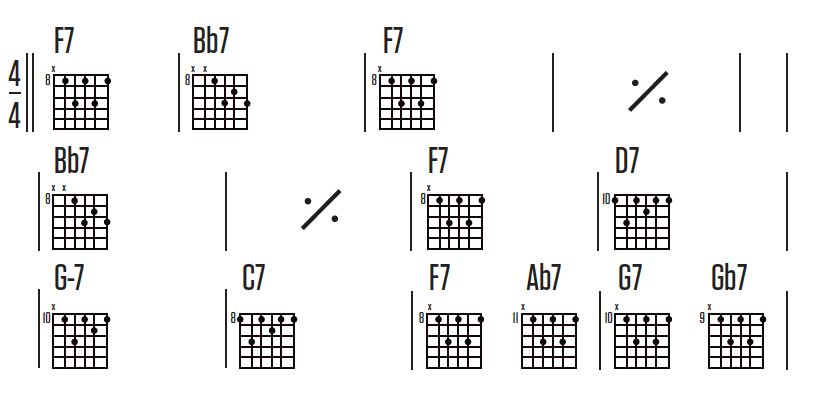
EXAMPLE #1 – Basic Contemporary Form in F


